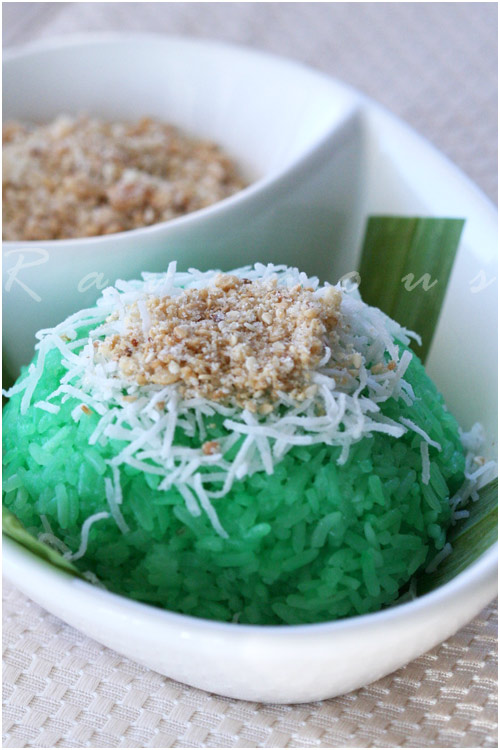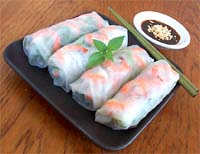Once again, I am running our of ideas and my dear hero (my own mother) saved me once more. This topic will be one of Vietnamese popular dishes: Bánh xèo.
Bánh xèo (literally "sizzling cake") are Vietnamese savoury (meaning salty, not like American ones that are usually sweet) pancakes made out of rice flour, water, (optional) chopped green onions, and turmeric powder or coconut milk (in the Southern regions), stuffed with thin slices of fatty pork, shrimp and bean sprouts and then pan fried. Traditionally, they are served wrapped in mustard leaf, lettuce leaves, and stuffed with mint leaves, basil, fish leaf and/or other herbs, and dipped in a prepared nuoc mam (Vietnamese fish sauce thinned with water and lemon). In the Central region, the pancake is dipped in a special 'tuong' sauce which consists of liver, hoisin sauce and garlic.
Southern style Bánh xèo are larger compared to the small pan-fried versions in the Central regions. Called "banh khoai" or stuffed omelette (even though the batter doesn't include eggs), today it is one of the best known dishes from the Central region. It made with rice flour and flavoured with cumin, it is fried until deliciously crispy around the edges in pans over charcoal burners. It is filled with little mounds of pounded pork, egg, shrimps, a few bean sprouts and some mashed green beans, and then folded over. To eat it, a piece is broken off with chopsticks and wrap it in fresh mustard greens with fresh herb leaves, slices of green banana and green fig, and dip it in a sauce (called 'tuong') which consists of liver, hoisin sauce and garlic.
The fresh herbs, which include the spicy, red-tinged cumin leaf, help to reduce any oiliness in the fried dish, as does the sourness of the banana and fig, which are also digestive aids.
At home, my family prepares bánh xèo in a similiar matter. However, the sauces are just a possibility for the consumer's desire on flavor. Nuoc mam is the most commonly used sauce to dipped with and and is easier to eat with other than the tuong sauce. Most people usually claim that nuoc nam is the best use because of its light flavor. Nuoc mam is has some fishy, but zesty taste to compliment the savoury aroma of bánh xèo.
This is a great dish and it is recommended to all to eat. It's also usually eaten with LOTS of greens and herbs, depending on how much flavor should be added. When making it, its best (recommended more like) to cook it without the greens. Remember, most Vietnamese eat fresh greens, so most cooked foods are usually eaten with a huge amount or fresh herbs, red lettuce leaves, etc. Some prefer cooked so it is an option on whether you wanted your greens to be cooked or not. I'm not sure about how it is in Vietnamese restaurants, but if you do order bánh xèo, it is usually cooked in Southern style.
This information is from Wikipedia : Bánh Xèo
And here's a recipe if you want to try making this at home: recipe





